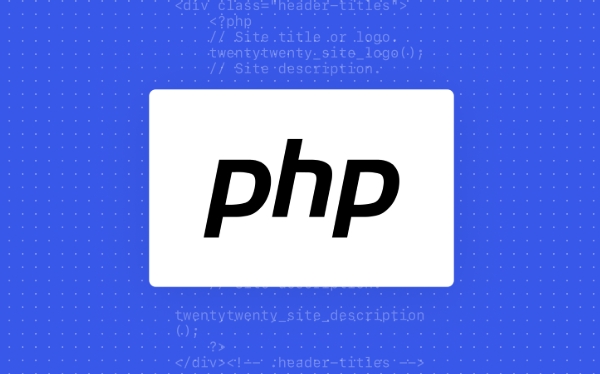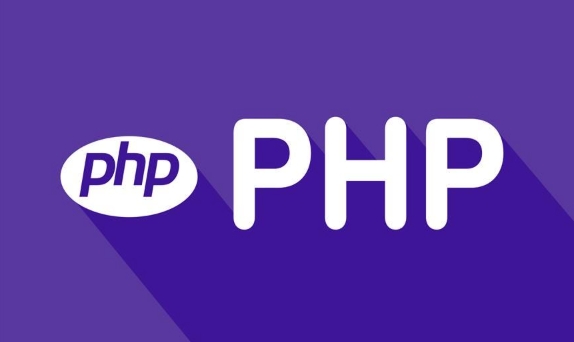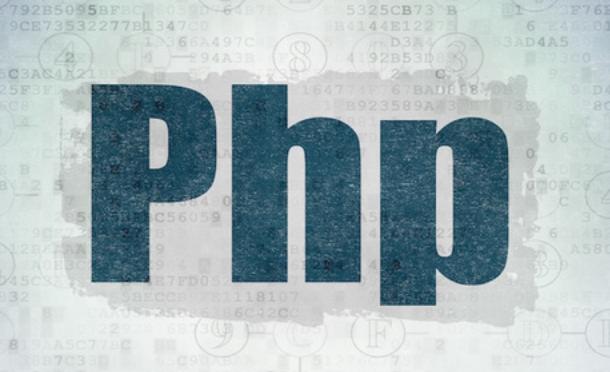There are three main ways to build a PHP development environment on your Mac: use Homebrew to install PHP, configure Apache or Nginx to run PHP, or use integrated tools such as MAMP and Laragon. First, use Homebrew to execute brew install php or the specified version to install it. If it is a non-main version, you need to manually link it; secondly, you can enable the system's own Apache and modify the configuration file to support PHP modules, or configure Nginx to handle requests in combination with php-fpm, pay attention to checking permissions and path issues; finally, MAMP and Laragon provide a one-click integrated environment for graphical interfaces, suitable for beginners, eliminating the steps of manually configuring dependencies. You can complete the construction by choosing the right method according to your technical capabilities and needs.

It is actually not difficult to build a PHP development environment on your Mac. You can choose from a variety of ways to complete it, such as using Homebrew to build it, or directly using integrated environment tools. Here are some practical methods and precautions.

Install PHP with Homebrew is the most convenient
Homebrew is the most commonly used package management tool on Mac, and installing PHP is very easy. First make sure you have installed Homebrew. If not, you can check the installation commands on the official website.

The steps to install PHP are as follows:
- Run
brew install phpto install the latest version of PHP - If you need a specific version (such as PHP 8.1), you can use
brew install php@8.1 - After the installation is completed, execute
php -vto see if the installation is successful
It should be noted that different versions of PHP may not automatically link to the system path. If the installation is a non-main version (such as php@8.1), you need to manually execute brew link --force --overwrite php@8.1 .

Configure Apache or Nginx to run PHP
By default, macOS comes with Apache, but PHP support is not enabled. You can configure it in the following ways:
- Start Apache:
sudo apachectl start - Modify the Apache configuration file
/etc/apache2/httpd.conf, remove the comments beforeLoadModule php_module, or add module loading statements - Restart Apache:
sudo apachectl restart
If you are using Nginx, you need to configure php-fpm . This service will usually be brought with you after PHP is installed. The way to start it is:
-
sudo brew services start php - Then configure Nginx to forward the request to the socket or port of
php-fpm
The error-prone parts of this step are permission issues and path errors. It is recommended to check the log file /var/log/apache2/error_log or Nginx log.
Using MAMP or Laragon is easier
If you don't want to mess with the command line, MAMP is a graphical tool that integrates Apache, MySQL and PHP, and starts with one click. Suitable for new friends.
Laragon is another lightweight tool. Although native to Windows, it also has an experimental version of macOS. Its advantages are fast speed, flexible configuration, and support for multi-project management.
The advantage of these tools is that they do not need to manually configure the dependencies between various services, and upgrades are also more convenient.
Basically these methods. You can choose the right method according to your technical level and needs. Using Homebrew is more free but also more "technical", and using tools like MAMP is faster. What is not complicated but easy to ignore is the path setting and service startup sequence. Be careful not to miss these details.
The above is the detailed content of How to build PHP environment on Mac?. For more information, please follow other related articles on the PHP Chinese website!

Hot AI Tools

Undress AI Tool
Undress images for free

Undresser.AI Undress
AI-powered app for creating realistic nude photos

AI Clothes Remover
Online AI tool for removing clothes from photos.

Clothoff.io
AI clothes remover

Video Face Swap
Swap faces in any video effortlessly with our completely free AI face swap tool!

Hot Article

Hot Tools

Notepad++7.3.1
Easy-to-use and free code editor

SublimeText3 Chinese version
Chinese version, very easy to use

Zend Studio 13.0.1
Powerful PHP integrated development environment

Dreamweaver CS6
Visual web development tools

SublimeText3 Mac version
God-level code editing software (SublimeText3)

Hot Topics
 What are some best practices for versioning a PHP-based API?
Jun 14, 2025 am 12:27 AM
What are some best practices for versioning a PHP-based API?
Jun 14, 2025 am 12:27 AM
ToversionaPHP-basedAPIeffectively,useURL-basedversioningforclarityandeaseofrouting,separateversionedcodetoavoidconflicts,deprecateoldversionswithclearcommunication,andconsidercustomheadersonlywhennecessary.StartbyplacingtheversionintheURL(e.g.,/api/v
 How do I implement authentication and authorization in PHP?
Jun 20, 2025 am 01:03 AM
How do I implement authentication and authorization in PHP?
Jun 20, 2025 am 01:03 AM
TosecurelyhandleauthenticationandauthorizationinPHP,followthesesteps:1.Alwayshashpasswordswithpassword_hash()andverifyusingpassword_verify(),usepreparedstatementstopreventSQLinjection,andstoreuserdatain$_SESSIONafterlogin.2.Implementrole-basedaccessc
 What are the differences between procedural and object-oriented programming paradigms in PHP?
Jun 14, 2025 am 12:25 AM
What are the differences between procedural and object-oriented programming paradigms in PHP?
Jun 14, 2025 am 12:25 AM
Proceduralandobject-orientedprogramming(OOP)inPHPdiffersignificantlyinstructure,reusability,anddatahandling.1.Proceduralprogrammingusesfunctionsorganizedsequentially,suitableforsmallscripts.2.OOPorganizescodeintoclassesandobjects,modelingreal-worlden
 What are weak references (WeakMap) in PHP, and when might they be useful?
Jun 14, 2025 am 12:25 AM
What are weak references (WeakMap) in PHP, and when might they be useful?
Jun 14, 2025 am 12:25 AM
PHPdoesnothaveabuilt-inWeakMapbutoffersWeakReferenceforsimilarfunctionality.1.WeakReferenceallowsholdingreferenceswithoutpreventinggarbagecollection.2.Itisusefulforcaching,eventlisteners,andmetadatawithoutaffectingobjectlifecycles.3.YoucansimulateaWe
 How can you handle file uploads securely in PHP?
Jun 19, 2025 am 01:05 AM
How can you handle file uploads securely in PHP?
Jun 19, 2025 am 01:05 AM
To safely handle file uploads in PHP, the core is to verify file types, rename files, and restrict permissions. 1. Use finfo_file() to check the real MIME type, and only specific types such as image/jpeg are allowed; 2. Use uniqid() to generate random file names and store them in non-Web root directory; 3. Limit file size through php.ini and HTML forms, and set directory permissions to 0755; 4. Use ClamAV to scan malware to enhance security. These steps effectively prevent security vulnerabilities and ensure that the file upload process is safe and reliable.
 What are the differences between == (loose comparison) and === (strict comparison) in PHP?
Jun 19, 2025 am 01:07 AM
What are the differences between == (loose comparison) and === (strict comparison) in PHP?
Jun 19, 2025 am 01:07 AM
In PHP, the main difference between == and == is the strictness of type checking. ==Type conversion will be performed before comparison, for example, 5=="5" returns true, and ===Request that the value and type are the same before true will be returned, for example, 5==="5" returns false. In usage scenarios, === is more secure and should be used first, and == is only used when type conversion is required.
 How can you interact with NoSQL databases (e.g., MongoDB, Redis) from PHP?
Jun 19, 2025 am 01:07 AM
How can you interact with NoSQL databases (e.g., MongoDB, Redis) from PHP?
Jun 19, 2025 am 01:07 AM
Yes, PHP can interact with NoSQL databases like MongoDB and Redis through specific extensions or libraries. First, use the MongoDBPHP driver (installed through PECL or Composer) to create client instances and operate databases and collections, supporting insertion, query, aggregation and other operations; second, use the Predis library or phpredis extension to connect to Redis, perform key-value settings and acquisitions, and recommend phpredis for high-performance scenarios, while Predis is convenient for rapid deployment; both are suitable for production environments and are well-documented.
 How do I perform arithmetic operations in PHP ( , -, *, /, %)?
Jun 19, 2025 pm 05:13 PM
How do I perform arithmetic operations in PHP ( , -, *, /, %)?
Jun 19, 2025 pm 05:13 PM
The methods of using basic mathematical operations in PHP are as follows: 1. Addition signs support integers and floating-point numbers, and can also be used for variables. String numbers will be automatically converted but not recommended to dependencies; 2. Subtraction signs use - signs, variables are the same, and type conversion is also applicable; 3. Multiplication signs use * signs, which are suitable for numbers and similar strings; 4. Division uses / signs, which need to avoid dividing by zero, and note that the result may be floating-point numbers; 5. Taking the modulus signs can be used to judge odd and even numbers, and when processing negative numbers, the remainder signs are consistent with the dividend. The key to using these operators correctly is to ensure that the data types are clear and the boundary situation is handled well.






